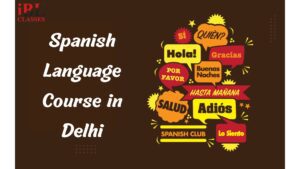1. Chinese is the native language for well over 1 billion people
2. Mandarin Chinese is spoken in 13 countries
3. A ‘red envelope’ or ‘red packet’ usually means money ???? and luck!
4. Chinese New Year never happens on 1st January
5. Chinese New Year is also known as the ‘Spring Festival’
6. Mandarin is the most popular Chinese dialect
7. Mandarin Chinese is not the official language in Hong Kong nor in Macau
8. Delicious dim sum can come in the cutest forms
9. Being ‘tone-deaf’ can cause problems when learning Mandarin
10. Mandarin Chinese is a major language in Southeast Asian countries
11. The humble fortune cookie is actually a Japanese treat
12. Mandarin is the official language in 3 countries
13. Mandarin Chinese is now the number one dialect in New York’s Chinatown
14. Once upon a time…epic tales are written from top right to bottom left
15. There are 50,000 written Chinese characters
16. Still baffled by Chinese characters? Get familiar with pinyin
17. Game-playing is for all ages in China
18. Chop suey is American, not Chinese
19. The Mid-Autumn (Moon) Festival is Almost As Important as Chinese New Year
20. Understanding Chinese culture can enhance your language learning experience dramatically
1) Chinese is one of the most ancient languages still in use today.
2) Chinese is the most widely spoken language in the world.
3) The word “Mandarin” originates from Sanskrit.
4) Mandarin isn’t the only “Chinese language”.
5) Chinese is a major language in numerous Southeast Asian countries.
6) It’s the only modern pictographic language.
7) The Chinese language doesn’t have an alphabet.
8) There are over 50,000 distinct Chinese characters.
9) You don’t need to learn all 50,000 characters!
10) Chinese has no articles, verb inflections, or plurals.
11) There are two sets of Chinese characters.
12) New Chinese characters are being added every year.
13) Chinese is an official UN language.
14) Challenging but not hard to learn.
15) Chinese is a tonal language.
16) Chinese follows different calligraphy styles.
17) There is no gender in Chinese!
18) The most complicated Chinese character is biang.
19) Chinese characters aren’t exclusive to the Chinese.
20) Chinese has borrowed words from English.
21) The world’s most famous people are learning Chinese as a second language!
22) Ancient Chinese texts were written from top right to bottom left.
23) The Chinese language has number symbols.
24) Learning Chinese makes you smart!
=================================================================
French is the fifth most widely spoken language in the world
French is spoken in 51 countries around the world
French is an official language in 29 countries
The French are wonderfully obsessed with bread and pastry
Learning French gives you a head start for learning the other romance languages
French is the ‘language of love’
Patisseries are a major part of French foodie culture
French is the second most popular language for people around the world to learn (after English)
The English language is full of French words
French is officially spoken on every continent in the world
Over half of the English language comes from French and Latin
French is the most taught language in the UK
French is the fourth most widely spoken language in the USA
‘Popping out for dinner’ in France can take hours
A business dinner in France is not the time for business
May Day is always on the 1st of May in France
France’s May Day is also known as Fête du Muguet
Watch out for French ‘false friends’
The band ‘Depeche Mode’ may be named after a French fashion magazine
French is one of the British Council’s essential ‘Languages for the Future’
===============================================================================
1. German is the 11th most widely spoken language
2. German is the official language of 5 EU countries
3. Some dialects are almost unintelligible to one another
4. The Bavarian dialect is considered the hardest to understand
5. There are also accent differences between countries that speak German
6. German was once a lingua franca of Central Europe
7. German has lots of compound words
8. German has a special letter
9. The German language and the English language are closely related
10. Like English, German has a lot of homonyms
11. Some letters sound different in German
12. German spelling rules changed in 1996
13. German used to be written in a different script than other languages
14. There are three periods in German language history
15. Low German still exists today
16. The Brothers Grimm wrote the first comprehensive German dictionary
17. Every noun is capitalized
18. German has 3 genders
19. German doesn’t distinguish between the habitual present and the present progressive
20. The German keyboard is slightly different than the English one
21. There are 6 ways to say ‘why’
22. There are also multiple ways to say ‘what’ and ‘where’
23. Compound nouns in German have gotten famously long
24. A survey was conducted to find the most beautiful German word
25. German is called the language of poets and thinkers
26. There are some pretty cool German words without an English equivalent
27. German has some pretty fun colloquialisms
================================================================================
1. Spanish is Spoken Worldwide by Approximately 500 Million People
2. Spanish is the Second Most Studied Language in the World
3. Spanish is the Official Language in 21 Countries
4. The Third Most Used Language on the Internet is Spanish
5. Mexico is the Country with the Largest Spanish-speaking Population
6. In the United States, Almost 41 Million People Speak Spanish
7. Spanish is the Only Official Language Spoken in All 5 Continents
8. One Language with Two Names
9. Spanish is One of the Most Fast-spoken Languages in the World
10. Spanish Comes from Latin and is a Romance Language
11. Spanish is a Phonetic Language
12. Spanish has Arabic Influences
13. The Spanish Language has an Institute Dedicated Specifically to its Regulation
14. Some Unique Words in Spanish can’t Be Translated to English
15. Spanish has Over 100,000 Different Words
16. It’s the Only Language that Uses Two Exclamation Signs and Question Marks
17. The Pronunciation of the Letter Ñ is Not Exclusive to the Spanish Language
18. The First Spanish Texts were Written More Than 1,000 Years Ago
19. There are over 40,000 Words in Spanish that Have All the Vowels
20. Many English Words Have Been Adapted to Spanish
21. The First Spanish Grammar Texts were Published When Christopher Columbus came to America
22. Spanish Used to be a Diplomatic and Divine Language
23. Spanish has Plenty of Homophone Words
24. Spanish has Nouns that Are Spelled the Same but Have a Different Meaning According to Genre
25. There’s Two Different Types of the Verb “To Be”
26. Two Words in Spanish Can Be Spelled the Same but Have a Different Meaning
27. You Can Express your Love in Different Ways
28. Spanish has Plenty of Words that Are Considered “False Friends”
29. The Letter X has been replaced by the letter J in many countries
30. The Pronunciation of the Letters Y and Ll Will Vary According to the Country
31. The Longest Word in Spanish has 23 Letters
32. The letters CH and Ll were removed from the Spanish Alphabet
33. Spanish-language Cinema, Music and Television are Currently Prospering
34. Spanish is Considered the Number One Language for the Future
====================================================================================
Turkish Facts
1. The Turkish language is part of the Turkic languages
2. Turkish has around 75 million native speakers
3. Before 1928, Turkish was written using a specific form of Arabic writing
4. Some Turkish words made it to the English Language
5. The Turkish language has some tongue twisters
1. Istanbul is on two continents
2. Ankara, not Istanbul, is the capital of Turkey
3. The original name of Istanbul is “Byzantium”
4. The story of Santa Claus originated in Turkey
5. The Turks love tea
6. Turkey has a young demographic
7. Istanbul (Old Constantinople) was founded on seven hills
8. The name “turquoise” actually comes from Turkey
9. The national sport of Turkey is oil wrestling
10. There are 82,693 mosques in Turkey
11. Turkey is the largest producer of hazelnuts
12. Turkey has an impressive self-sufficient agriculture
13. The Turks love their bread
14. There are more than 30 ethnic languages in Turkey
15. The “Evil Eye” is the best-selling souvenir
16. We owe coffee to the Turks
17. Turkish women could leave their husbands for coffee
18. The Grand Bazaar has more than 3000 stores
19. Istanbul Airport is a major aviation hub
20. Noah’s Ark allegedly landed on Mount Ararat
=============================================================
1 THERE ARE THREE “TYPES” OF ARABIC
Classical Arabic
Modern Standard Arabic (MSA)
Colloquial Arabic
2 PEOPLE WRITE WORDS FROM RIGHT TO LEFT AND NUMBERS FROM LEFT TO RIGHT
⠀
3️ THE ARABIC ALPHABET ISN’T ACTUALLY AN ALPHABET
4️ ARABIC IS THE FIFTH MOST SPOKEN LANGUAGE IN THE WORLD
5️ YOU NEED AN AVERAGE OF 1.69 YEARS TO LEARN ARABIC
Around 420 million people speak Arabic. It ranks as the 5th most spoken language in the whole world after Mandarin, Spanish, English and Hindi!
• Many of the most popular languages in the world have been influenced by Arabic. For example, English, Spanish, Indonesian, French, Persian, Urdu, Kurdish, Bengali, Hindu, Malay, Tagalog, Portuguese and Turkish.
• Speaking of influence, Arabic is a member of the Semitic languages family. It was also influenced by other languages such as Aramaic, Hebrew, Persian, and Hellenistic Greek. For example, the word “madina” (meaning city) is of Hebrew origin.
• The Maltese language is considered a branch of Arabic and is also the only Arabic dialect written in Latin alphabet!
• While it’s true that classical Arabic only dates back to the 6th century, the Arabic language is, in fact, at least 1,500 years old. Older versions of the language and dialects exist. This is before the emergence of Islam dating as far back as the 2nd century BCE when the Nabataeans. They lived in what is known as Jordan today. They wrote a cursive Aramaic which developed into the Arabic alphabet.
• The Arabic language has an “abjad” system and not an alphabet. The Arabic abjad is made up of 28 letters, written from right to left. All of the letters are consonants, since the vowels in Arabic are denoted by diacritics. These are marks that can be added either on top or underneath the letters.
• Each Arabic alphabet letter can be written in four different ways when writing a word. Either stand-alone or isolated, when it is at the beginning, in the middle or at the end of the word.
• The Arabic alphabet includes letters or sounds that other languages do not have. For example, you have Haa, Kha, Ayn, Ghain, Dad, Haa, Saa, Taa, Thaa, Qaf, and some unique sounds like the rolled “r” which is similar to Spanish r. Then there’s also the raspy Kh, the gargling GH and the glottal stop “ayn” which doesn’t have an equivalent in English.
• Arabic language is a cursive language. Remember, however, that each letter has four different forms depending on its position in the word.
• Arabic language has almost unlimited vocabulary, with no exact or verified number of words. Sources are conflicting and claim it can be between 100,000 to 500 million; nevertheless, there is no definitive answer.
• While you write words from right to left in Arabic, numbers are the opposite, from left to right.
• Arabic uses punctuation marks like other languages. However, they are backwards! Since Arabic is from write to left, doesn’t that make sense؟
• In case you’re wondering, “Does Arabic use capital letters?” the answer is no.
• There is no verb “to be” in the Arabic language.
• There are at least 11 words for “love” (Hubb, حب), and a 100 for “camel” (Jamal, جمل).
• It will take you between 1,000 and 1,500 hours to reach the high intermediate level in Arabic.
• People often consider Arabic as one of the hardest languages to learn after Chinese. However, recent studies have shown that it’s actually not really that much harder to learn than other languages. Just the approach is different because of the way the letters and the root system of words. So it’s not the language, it’s the approach to it that is difficult.
• Arabic calligraphy started as a tool of communication. It started as an artistic expression such as construction, design, currency. In fact, modern artists consider Arabic calligraphy its own separate area of the arts.
• Many students in the Arab world treat the language as “inferior” or “outdated”. Even more so, they treat it as an “uncool” language and opting to rely on English for self-expression. However, as it is now the fourth largest language in the world.
1. 13th most spoken language in the world
2. Japanese is an ‘isolate’ Language
3. It does not have Definite or Indefinite Article
Articles such as ‘a’, ‘an’ or ‘the’ are not there in the Japanese language.
4. It has four alphabets
The Japanese language has 4 alphabets, which are-
• Kanji: This was imported from the Chinese alphabet somewhere in the 3rd century. The Kanji alphabets are logograms and consist of over 50,000 characters.
• Hiragana: It is the basic way of writing in Japanese. Hiragana characters are curly shaped like the English cursive.
• Katakana: They are used for loan words such as animal names, food or companies and are usually used for emphasis.
• Romaji: Meaning “Roman letters”, Romaji is the use of Latin script.
5. The months don’t have names in Japanese
The months are given numbers 1 to 12, with January taking the lead.
6. It follows subject-object-verb order
While the English language uses the subject-verb-object- order, the Japanese language uses the subject-object-verb.
7. It’s real name is Nihongo
Although we simply call it Japanese, the native people of Japan call it Nihongo.
8. It has two main writing styles
The Japanese language can either be written horizontally or vertically.
9. There are no plurals
To understand when some say something is plural or single depends on the context of the sentence.
10. It’s one of the world’s fastest spoken languages
With an average rate of 7.84 syllables per second, it is considered to be way faster than many other languages such as English, which has an average rate of 6.19 syllables per second.
11. It has many common words with Chinese.
This is due to the influence that Chinese culture had on Japan as many words are written in the same way such as genius” 天才, which is pronounced ‘tsièn-sai’ in Chinese ane ‘tensai’ in Japanese.
12. Japanese comes first for Japanese Emigrants
Even after they’ve migrated to other countries, Japanese tend to bring their language and culture with them and utilise as much as possible especially within their communities.
13. Spell Of Homophones
Homophones that have different meanings are pronounced the same. For instance, there are 8 different characters for the word “shin”, which are God, advance, believe, new, true, stretch, heart, and parent.
14. Polite language
Known for their politeness and good manners, Japanese also ensure that their language is structured in a polite manner, be it spoken or written.
15. Days are named after 7 mobile stars known during Antiquity
The Japanese days (Monday to Sunday) are derived from the 7 mobile stars known during Antiquity, which are the Sun, the Moon, Mars (kanji of fire), Mercury (kanji of the water), Jupiter (wood kanji), Venus (metal kanji) and Saturn (earth kanji).
16. Many Japanese words are used by other countries
The words we use such as karaoke, tofu, anime, origami, and so on are originally Japanese words.
17. 7th most languages used on the Internet for 2021
According to Statista, Japanese language is the most commonly used language on the Internet in 2021. It comes after English, Chinese, Spanish, Arabic, Portuguese, and Indonesian/Malaysian. It has been on the list since 2011.
18. One must know 2000 kanji to be able to read a newspaper
Out of over 4,476 kanji, you need to know at least 2000 kanji to be able to read a newspaper smoothly.
19. Origins of the Japanese language are unknown
Historically, the origins of the Japanese language is not known and text with Japanese only appeared in the 8th century.
20. It is not a tonal language
Unlike Vietnamese, Chinese or Thai, the Japanese language is not tonal. The pitch accent used can differentiate homophones.
25 Facts of Italian Language
Italian is spoken by over 63 million people worldwide
Italian has many unique words that aren’t easy to translate
Italian is a Romance language derived from Vulgar Latin
Italy is home to many other dialects and languages besides Italian
Standardised Italian spread thanks to television
Italian isn’t an official national language according to the Italian Constitution
However Italian is the official language of many other countries
Italian was also the language of many former colonies
Italian is no longer one of the most widely spoken languages in America
And speaking of the US, did you know that the word “America” is Italian?
Italian is one of the most studied foreign languages in the world
Italian is based on the Florentine dialect of Florence
The most famous and widely read Italian novel is ‘I Promessi Sposi’
Other languages contain many Italian loanwords
And Italian has borrowed many words from other languages too!
And speaking of so-called contaminations, did you know that there is an academy focused on preserving the purity of Italian?
Italian is considered the official “language of love
Italian has seven vowel sounds
Nearly all Italian words end in a vowel
Stress in Italian usually lies on the second-to-last syllable
Italian spelling reflects the pronunciation
The Italian alphabet consists of 21 letters
You can omit the subject in Italian
There are many famous Hollywood celebrities who speak Italian very well
Some of the most well-known actors who speak Italian include:
• Colin Firth: Learned Italian for his wife, Livia Giuggioli, a director, producer and environmentalist. They have a home in Umbria.
• Audrey Hepburn: Spoke Italian, French, Spanish and Dutch from an early age.
• Ingrid Bergman: Lived in Italy and made five Italian language films with director and husband Roberto Rossellini.
• Jodie Foster: Studied Italian at university and has used it in films such as Il Casotto by Sergio Citti.
• Penélope Cruz: Learned Italian by working with director Sergio Castellitto on his films Non ti Muovere and Venuto al mondo.
• Vincent Cassel: Was married to Monica Bellucci for 14 years.
The longest word in Italian is 30 letters
psiconeuroendocrinoimmunologia,
1. Korean is one of the world’s oldest living languages
2. Korean Pop Culture has become immensely popular in the last decade
3. Korean has some famous tongue twisters
4. Hangul is one of the youngest alphabets worldwide and linguists love it
5. Verbal humour is frowned upon in Korea
1: KOREAN IS HARD FOR ENGLISH SPEAKERS TO LEARN
2: KOREAN HAS ITS OWN SCRIPT
3: DOES KOREAN SHARE SIMILARITIES WITH OTHER LANGUAGES?
4: THE LANGUAGE IS “BRILLIANTLY DESIGNED”
5: THE SHAPE OF THE LETTERS MIMIC YOUR TONGUE
6: SPECIAL NOUNS AND VERB ENDINGS INDICATE FORMALITY
7: KOREANS OFTEN USE COMMUNAL PRONOUNS
8: THERE ARE TWO KINDS OF NUMBERS
9: THERE ARE DISTINCT DIFFERENCES BETWEEN NORTH AND SOUTH KOREAN
10: THERE IS A NATIONAL HOLIDAY IN HONOUR OF THE LANGUAGE
In Pakistan, Urdu is spoken and understood by a majority of urban dwellers in such cities as Karachi, Islamabad, Lahore, Rawalpindi, Peshawar, Quetta, Hyderabad, Sialkot, Gujranwala, Faisalabad, Multan and Sukkur.
Urdu is used as the official language in all provinces of Pakistan.
It is also taught as a compulsory language up to high school in both the English and Urdu medium school systems. This has produced millions of Urdu speakers whose mother tongue is one of the regional languages of Pakistan such as Punjabi, Sindhi, Pashto, Gujarati, Kashmiri, Balochi, Siraiki, and Brahui.
Most of the nearly five million Afghan refugees of different ethnic origins (such as Pakhtun, Tajik, Uzbek, Hazarvi, and Turkmen) who stayed in Pakistan for over twenty-five years have also become fluent in Urdu.
In India, Urdu is spoken in places where there are large Muslim majorities or cities, which were bases for Muslim Empires in the past. These include parts of Uttar Pradesh, Delhi, Bhopal, Lucknow, Hyderabad, Bangalore, and Mysore.
Some Indian schools teach Urdu as a first language and have their own syllabus and exams; Indian madrasahs also teach Arabic as well as Urdu.
India has more than 2900 daily Urdu newspapers. Newspapers such as Daily Salar, Daily Pasban, Siast Daily, Munsif Daily and Inqilab are published and distributed in Bangalore, Mysore, Hyderabad, and Mumbai.
1. Shakespeare added over 1,000 words to the English language.
2. Most English words come from French or Old English (use this to your advantage!).
3. The United States doesn’t have an official language.
4. English used to have grammatical gender.
5. English uses the Latin alphabet.
6. The British Empire and the iPhone are some of the biggest reasons English is so widespread today.
7. English used to have 29 letters instead of the current 26.
8. English is the official language of the air.
9. You can blame confusing English spelling on a guy named William Caxton.
10. Cute Aggression
“Cute aggression” is the term for wanting to hug something cute very hard—almost violently. Ever want to just squeeze your kitten because she’s so darn adorable?!
Your puppy is so adorable that I have cute aggression!
11. Ze/Hir
Ze and hir are gender-neutral pronouns that’ve slowly been gaining popularity. These are different from the gendered pronouns “he/him” (masculine) and “she/her” (feminine).
My friend is so excited that ze is coming to the party later.
12. Genderlect
Genderlect is a style or type of speech used by a specific gender.
Whether or not men and women speak different genderlects is a subject of recent debate.
13. Heuristic
Heuristic is used to describe something that’s taught or learned from experience.
The professor applied a heuristic teaching method so that her students would learn by trial and error.
14. Bardolatry
Here’s Shakespeare again! Bardolatry refers to someone who’s obsessed with Shakespeare. (Shakespeare is sometimes referred to as “The Bard.”)
Shakespeare is still celebrated so much today that Bardolatry is alive and well.
15. Boffola
Boffola is a joke that’s met with extremely loud laughter.
That was the comedian’s best boffola all night!
16. Mouse Potato
Ever heard the term couch potato (someone who watches a lot of TV)? Well, mouse potato refers to someone who works on the computer a lot.
Ever since Susan started her online company, she’s been such a mouse potato.
17. Snollygoster
Snollygoster refers to a person without principles.
The politician is a snollygoster who lies and steals to get what he wants.
18. Petrichor
Petrichor is a word to describe the way it smells after it rains.
I love the petrichor of a summer thunderstorm.
Surprising Statistics You Can Count On
19. A new English word is added to the dictionary every two hours.
Editors from the Oxford English Dictionary have estimated that about 4,000 new words are added to the dictionary every year.
That means a new word about every two hours!
20. There are approximately 1.5 billion English speakers in the world.
That’s 20 percent of the world’s population!
About 600 to 700 million of those are non-native speakers. Find out more at St George International.
21. English has more words than most languages.
There are currently about an estimated one million words in the English language.
But don’t let this scare you, because…
22. The average English speaker only knows between 20,000 and 30,000 words.
While this statistic from Twinword still seems daunting, it should be a comfort to learners that you’re not going to have to memorize all of the million English words out there.
You’ll still be understood!
23. The most commonly used letter in English is “E.”
According to Oxford Dictionaries, “E” is the most commonly used English letter, and “Q” is the letter used the least.
To put it in perspective, “E” is 56 times more common than “Q.”
24. The longest English word is pneumonoultramicroscopicsilicovolcanoconiosis.
It’s a medical term that refers to a lung disease caused by inhaling sand dust or ash.
25. The shortest, non-elliptical sentence is “I am.”
A non-elliptical sentence is a sentence that doesn’t leave anything out.
For example, the command “Go!” may seem like the shortest sentence, but it’s elliptical. It leaves out the pronoun “you.” Technically, it would be “You go!” which is two letters longer than “I am.”
26. Some of the oldest words in the English language are still very common today.
They include I, love, black, mother, fire, hand and hear.
Many of these words date back from before the year 900.
Check out more of the oldest words at Dictionary.com. Some of them might surprise you!
27. The most commonly used adjective is good.
Of course, different sources come up with different answers for this, but “good” is usually listed among the most common adjectives.
Syllable Count gives it the number one spot on their list, while Word Frequency Data places it below a few adjectives such as other and new.
28. The most commonly used noun is time.
The Oxford English Dictionary has identified time as the most frequently used noun.
Person received second place, followed by year in the third spot.
29. The closest living language to English today is Frisian.
Frisian is a language currently spoken in just three small areas of Germany and the Netherlands.
Amusing Alphabet Tricks and Their Names
30. Two English words can combine into one.
A portmanteau is a word that blends the sounds of two English words to make a new word that combines their meanings.
For example, hangry means hungry and angry.
31. You can fit every letter of the alphabet into a single sentence.
A pangram is a sentence that contains every letter from the alphabet.
A very famous English pangram is: “The quick brown fox jumps over a lazy dog.”
32. Some English words look the same backward or forward.
A palindrome is a word or phrase that’s spelled the same whether you read left-to-right (like normal) or right-to-left.
An example word is madam.
33. Some English words look the same upside down.
An ambigram is a word that looks the same upside down as right-side up.
A great example is the word “SWIMS” with all capitalized letters.
34. There’s a name for words and phrases where each letter is used the same number of times.
An isogram is a word or phrase in which each letter appears the same number of times.
For example, the word dialogue uses each letter once.
35. Some English words repeat to make a new word.






